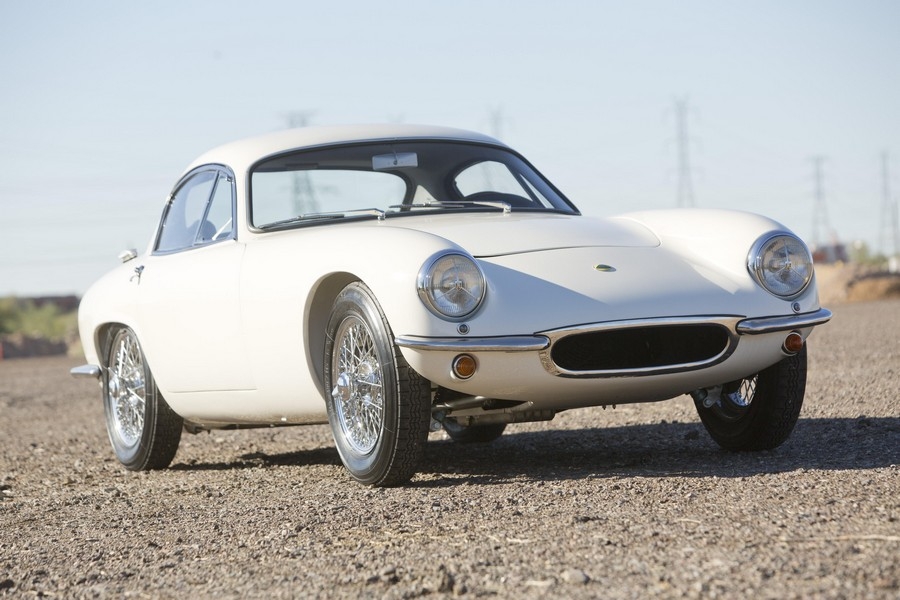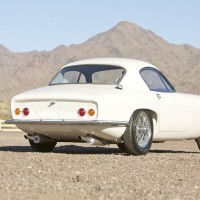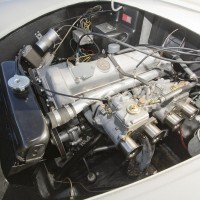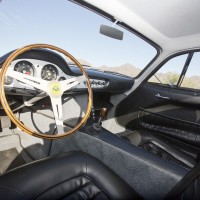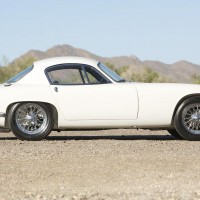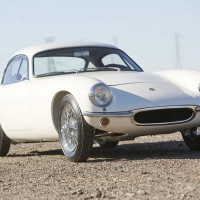SCM Analysis
Detailing
| Vehicle: | 1960 Lotus Elite Series II |
| Number Produced: | 1,047 |
| Original List Price: | $4,780 |
| Distributor Caps: | $25 |
| Chassis Number Location: | Above the Lotus chassis plate on the right side of the firewall in the engine compartment |
| Engine Number Location: | Hand-scribed on the Lotus chassis plate and stamped on the vertical surface of the block below the dynamo |
| Club Info: | Worldwide Club Lotus Elite; Lotus Ltd. |
| Website: | http://www.lotuseliteworldregister.com |
| Investment Grade: | B |
This car, Lot 189, sold for $97,900, including buyer’s premium, at Bonhams’ Scottsdale auction on January 16, 2014.
The original Lotus Elite of 1959–63 pushes a lot of car-collector buttons: It was a technologically advanced car in its day, it was made in limited quantity, it has notable racing accomplishments, it is beautiful to behold, and it comes with a large dose of mojo.
Applying lessons learned from racing, Colin Chapman produced an innovative design with the Elite: a fiberglass monocoque structure with steel frame members and suspension pickup points embedded in the fiberglass. This resulted in a very lightweight car at about 1,450 pounds dry weight. This also meant fragility, another Chapman trademark. In the early cars especially, the fiberglass was prone to cracking and failure at the all-important suspension pickup points. However, that problem was lessened when the fiberglass shell was modified and production was transferred to Bristol Aircraft, where our subject car was produced.
A streetable racer
The Elite was the first car that Lotus built specifically for the street, even though its racing potential was no coincidence. It was also the first Lotus with a permanent hard-top coupe body.
The Elite got the suspension of the single-seat Lotus 12 — Chapman’s first open-wheel race car. This suspension comprised a four-wheel independent suspension with transverse wishbones, coil springs, shock absorbers, an anti-sway bar at the front, namesake Chapman struts at the rear and rack-and-pinion steering.
The Elite also had all disc brakes (inboard at the rear), and a remarkably low 0.29 coefficient of drag achieved without benefit of computer-aided design or even wind-tunnel testing. The result was that most of the Elite’s contemporaries seemed like lumbering family cars.
Although conceived by Colin Chapman, it was Peter Kirwan-Taylor who produced the styling sketches for what would become the Elite. Frank Costin, Chief Aerodynamic Engineer for the de Havilland Aircraft Company, helped to modify the shape to reduce drag.
That low drag was necessary, as the engine selected for the car was the Coventry Climax 1,216-cc, 4-cylinder known as the FWE (“Feather Weight Elite”). This was a modified version of what was originally a fire-pump engine. With a cylinder head, block, and sump made of cast aluminum, and a single overhead camshaft with a single SU carburetor on the early cars, it produced just 75 hp and developed a reputation for burning oil, requiring a quart every few hundred miles. The transmission was a 4-speed BMC B-series box shared with an MG.
Period road tests reported a top speed between 112 and 118 mph, a 0–60 mph time of 11–12 seconds, and fuel mileage as high as 40 mpg.
Fragile, fun and collectible
Lotus made just 1,047 examples of the Elite before attention turned to producing its successor, the Elan. Unfortunately, the Elite’s price was fixed low enough that Chapman reported losing 100 pounds sterling on each car. Given the fragility and frequent racing use of the car, the survival rate has not been high. However, recent years have witnessed a significant increase in interest in the model as collectors have begun to notice the Elite’s many virtues.
Lotus was then, as now, a niche marque, appealing to a certain breed of drivers who often used them in competition. These drivers appreciated their advanced features so much that they forgave their fragility, cramped cockpits and lack of ventilation. As a car for the rebel sportsman, it was in the avant-garde of the Swingin’ Sixties — in short, a car for the thinking, fun-loving nonconformist. If Jaguar had class, Lotus had mojo.
This particular example was the subject of a thorough and correct restoration, with a pair of Weber carburetors replacing the original single 1.5-inch SU and cast-iron manifold. The only other obvious deviations from original spec are the orange directional light lenses, both front and rear, when Elites were originally supplied with white/clear turn-signal lenses for all North American deliveries.
The sale price of this Elite fell somewhat short of the pre-auction estimate of $110,000–$130,000, and is in the lower half of the SCM Pocket Price Guide range of $75,000–$140,000. As an excellent example with a recent and high-quality restoration by a specialist shop, and with rare and desirable — outside of the U.K. — left-hand drive, I call this example well bought. ♦
(Introductory description courtesy of Bonhams.)
